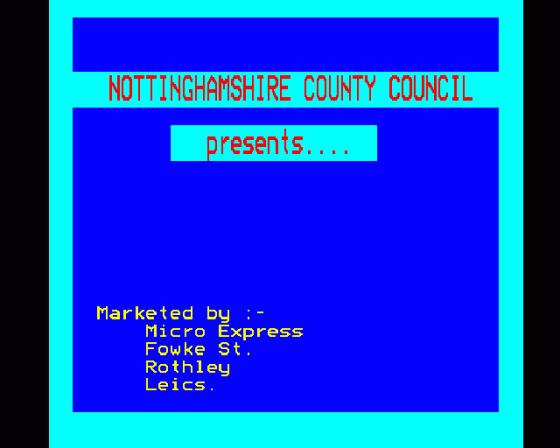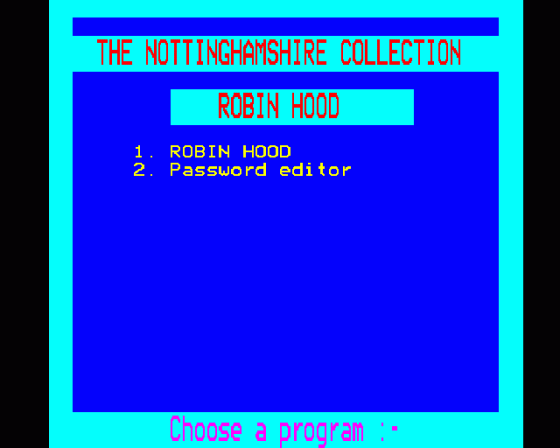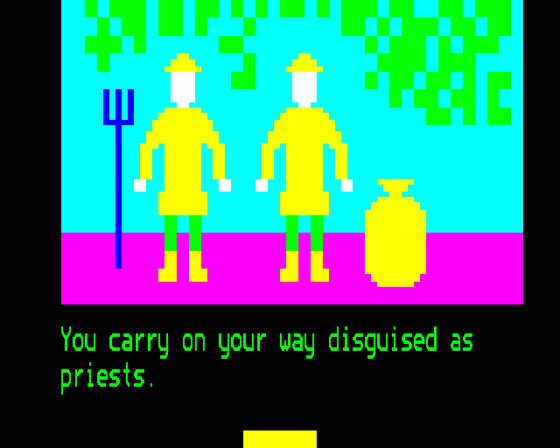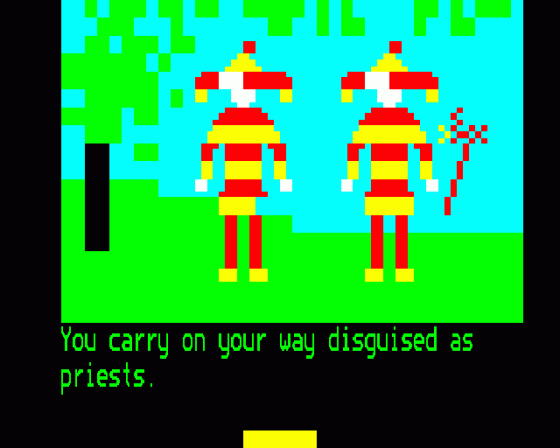
A&B Computing
 1st March 1986
1st March 1986
Author: Des Thomas
Publisher: Micro Express
Machine: BBC Model B
Published in A&B Computing 3.03
Robin Hood has been the star of books, films, television and musicals for many years, so it's not surprising that the good folk of Nottingham have dreamed up a computer adventure based on his exploits. Robin Hood, the game, is distributed nationally by Micro Express as art of their Nottingham Collection - we hope to review the rest in a future issue.
The disc is just one part of a multimedia package developed around the theme which includes teacher's notes, ten ballads with ideas for development, a drawing of Nottingham Castle and a delightfully illustrated booklet entitled "Nottingham's Royal Castle" by the Nottingham Civic Society containing many of the ballads in olde English which the older children will enjoy "translating" and an audio cassette of the ballads.
I'm always pleased to see a cassette version of the story/ies included in any adventure package, as it means that small groups of youngsters can sit and listen - perhaps using headphones - just before they start their adventure, rather than waiting some time for their turn, and usually it's performed far better than I could hope to achieve. In this case, the ballads give a flavour of the life of Robin Hood rather than a direct lead-in to the adventure, so they'll need to tune in several times if they're to take up some of the suggestions for follow-up work. I must admit I was somewhat disappointed with the rendering of the stories - they were uninspired readings when I felt some dramatisation was called for. No doubt the children will be improving upon them!
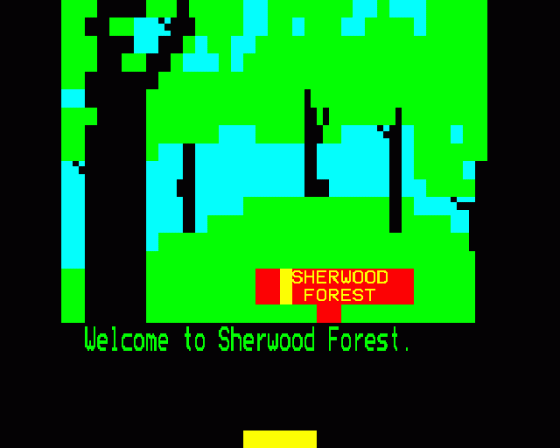
Users are first asked for a secret code - if this is not known, the group (the program accepts 20 groups of up to six members) will be asked for their names and then given their own code. The adventure can be stopped and saved at any time by pressing Escape and by typing in the code the group is returned to the same position. This is a nice touch which cuts out all the unnecessary repetition which is often the most annoying part of an adventure. Although the notes state that the features remain constant for each group when the code is used, I did not find this was the case in the third part of the adventure, where some of the positions of the keys varied at each attempt. (The keys are redistributed if the group is caught.)
In the first part of the adventure, from Sherwood Forest to Nottingham Castle, the group has to select a surprise in order to enter the castle. The group has a fair chance of gaining entry to the Outer Bailey without too much difficulty, but once in, will have to change the disguise for another which will act as the passport to the Middle Bailey (the correct terminology is used throughout). This is done by visiting a number of houses and exchanging items for parts of the new disguise. To succeed, the deals have to be made in a specific order, so the group have to make careful records of the decisions made and the results of these actions.
The third part takes place in the Middle Bailey, where the group has to collect three keys in order to open the door to the Upper Bailey. The children with whom I tried this program didn't find this easy, and the three lines of notes covering this part of the program were not as helpful as they might have been 0 not even listing the attributes which must be considered! It was quite a challenge, and it was only after a fellow reviewer admitted he'd spent the whole weekend trying to solve the puzzle that I didn't feel quite so stupid. At one time, I actually had one more key than the total given in the program, but the fact that I had a duplicate might have accounted for that. (Micro Express are not sure whether I can't count or whether there is a little bug - they're checking!). If you do find duplicates, don't try to be too clever otherwise you'll find yourself trapped with the Break key as the only way out! I spent some time making copies of the keys to try and sort them out away from the keyboard - remember that useful save facility? - so a helpful addition would be a photocopy master of the key outlines (Micro Express are going to add this to the handbook).
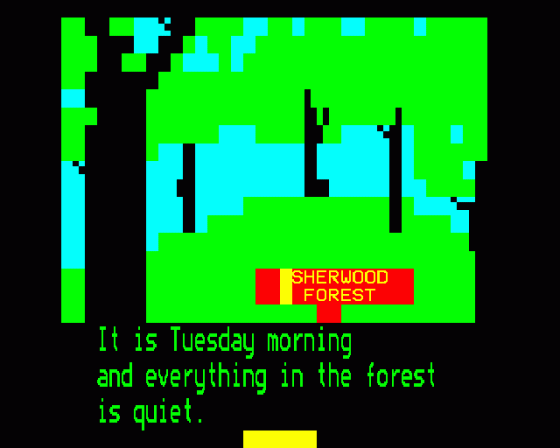
As it is suggested that this program is intended for use with a fairly wide age range, it would have been very helpful if the teacher or parent had some control over the number of attributes which have to be considered and Micro Express are looking into this option. At the moment it is far too difficult for the younger or less able children to deal with all five - colour, length, thickness of stem, number and position of prongs. Just in case you think that's all criticism, I must admit that I found it very clever, and it'll add considerable interest to some maths lessons - bring out the logiblocks!
Once you've made it to the Inner Bailey, you'd think you should have no trouble finding the Merry Men. Not on your life! There are still quite a number of rooms to visit before they can be saved and whatever you go, don't forget the nasty Sheriff or the freed prisoners might be recaptured rather quickly. Fortunately, the group is always able to hide and try again! We were happy when we'd managed to save all the Merry Men, but we're till not sure how we managed it because we hit several snags when we tried to draw out out plan which we found inexplainable. Most of the rooms were logical and constant but how, for example, could we go north from the Library to the Falconry and continue north and find ourselves north and find ourselves back in The Library? Whether we had missed something or there's a bug in the random choice procedure which produces "duplicate" rooms as it did duplicate keys in part three, I don't know. (Micro Express say that there are a few secret passages which cause this to happen!) Perhaps a teacher's key would give access to a screen copy of the group's plan if they need some gentle advice would be helpful.
This program was produced by a local education authority and intended for use in schools as part of project work. There is, I think, an important difference in the requirements for adventure programs intended for this situation and those for the devotee at home, who is willing and able to spend hours solving the puzzle. There are programs which teachers have to spend a considerable time in getting to know but good support material and guidelines (a quick way through for busy teachers!) for this type of program can be invaluable. A program which would general sets of control keys which groups who have difficulty could experiment with away from the keyboard would also be useful. Perhaps the publishers should compare this package with 4Mation's Dragon World - this one's more expensive!
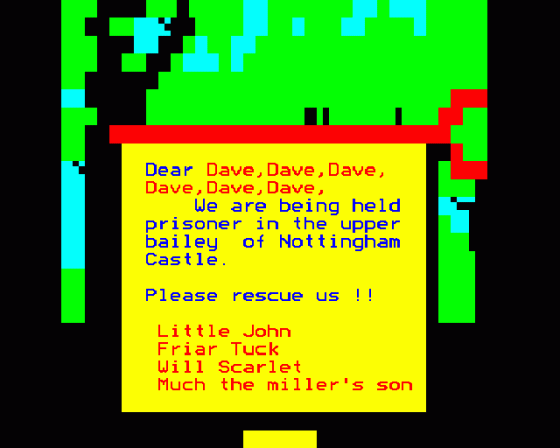
The graphics used are fairly simple Mode 7 types, but generally speaking I found them pleasing and they should give the users some useful ideas for developing pictures for use in their own adventures or for teletext/electronic book pages. The creature work engendered by this program would lend itself well to this form of communication. One aspect of the program I particularly liked was the use made of sound - some of the best quality I've heard in this type of program. It's never too loud, so don't take the sound off option.
Despite some of the critical comments, I think this program has considerable potential and, with some modifications, it could become a very useful addition to any school's collection.
As a matter of interest, I took the unusual step of sending a draft of my review to Micro Express as there were one or two points I wasn't sure about and I didn't want to make unfair criticisms if it was just me being a little slow on the uptake! I must give them full marks for customer service. Not only were they polite and patient but they responded promptly as promised to every point raised. I'm sure you could think of a few firms who could learn from that! Where possible, I've included their replies in brackets in the appropriate place in the review. Hopefully, by the time you read this, an "improved version" will be available - keep an eye on the News pages for information.

